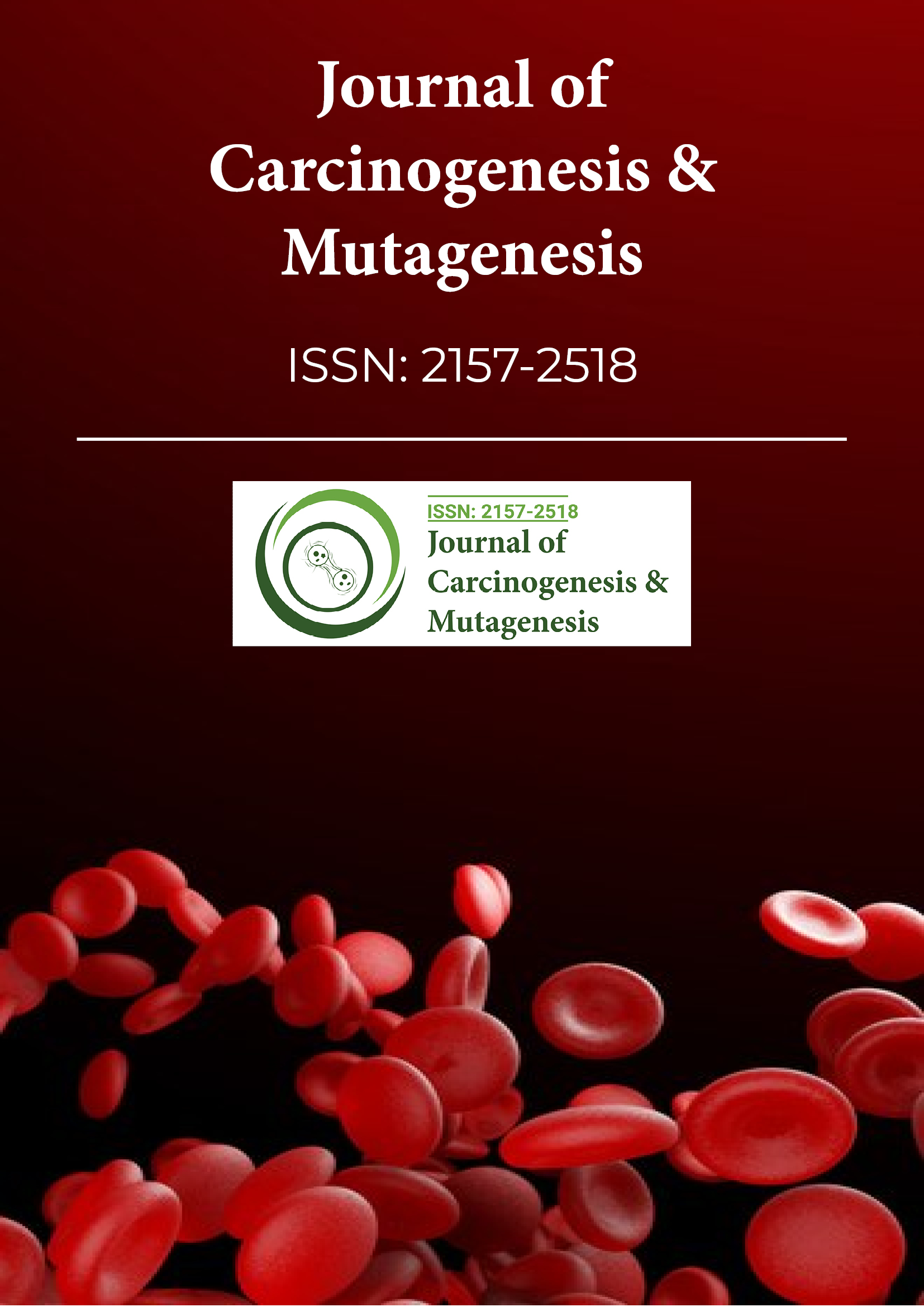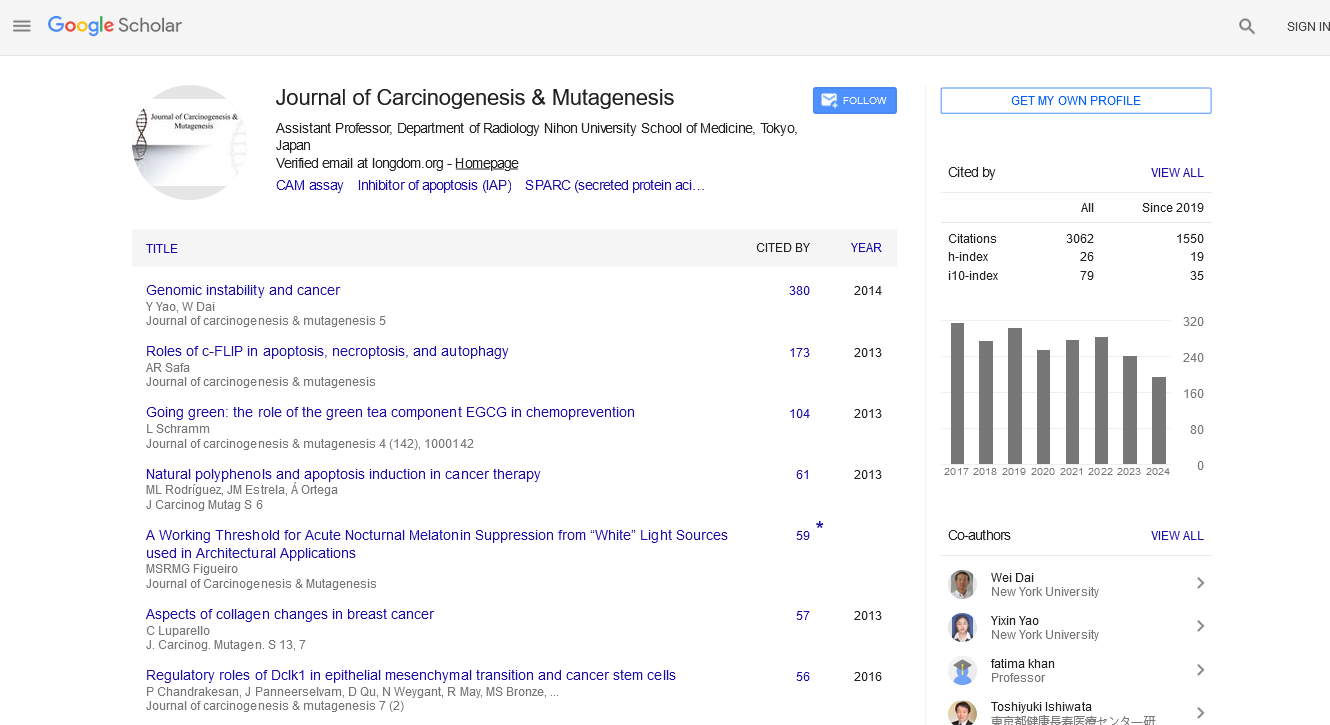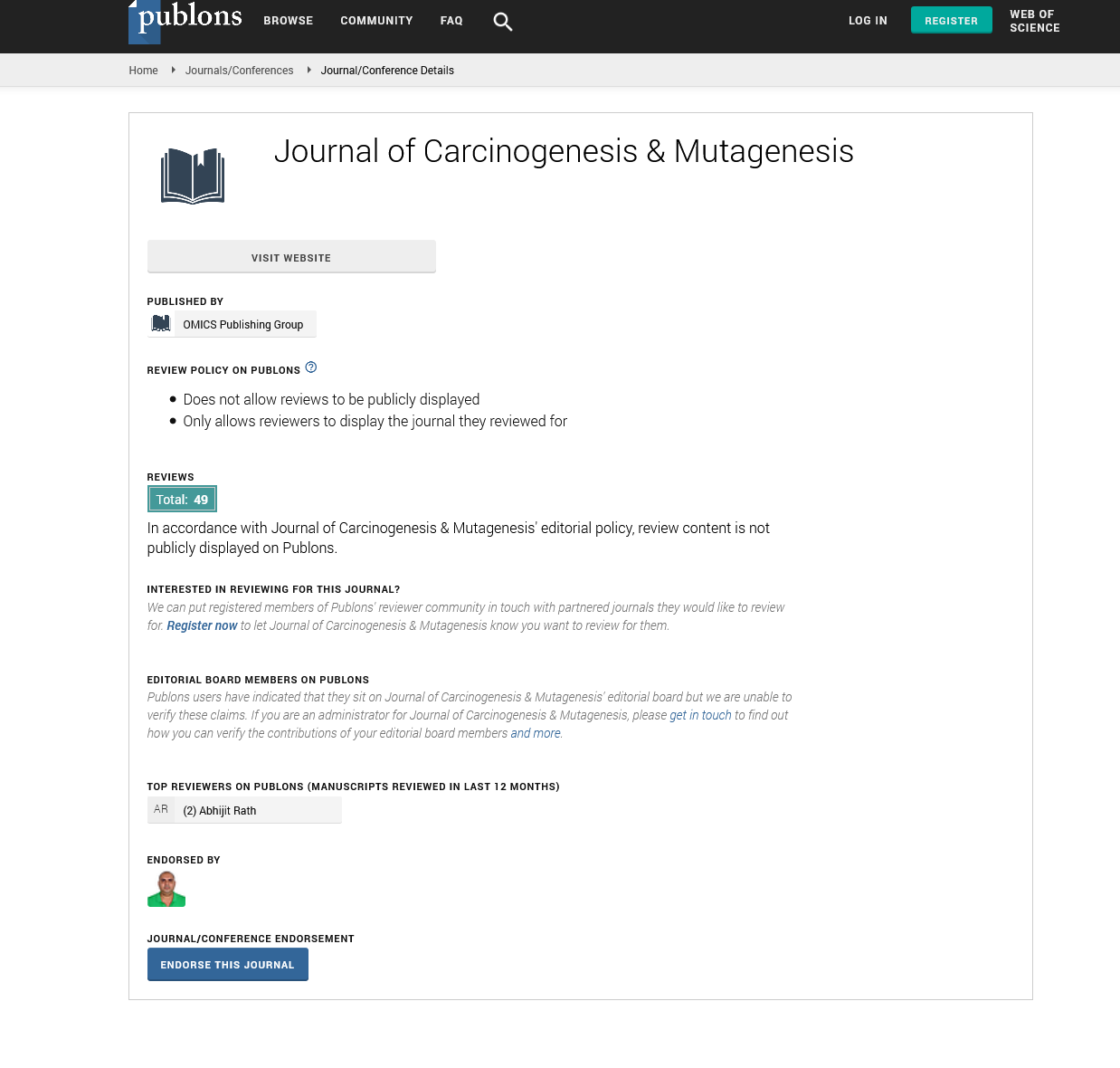PMC/PubMed Indexed Articles
Indexed In
- Open J Gate
- Genamics JournalSeek
- JournalTOCs
- Ulrich's Periodicals Directory
- RefSeek
- Hamdard University
- EBSCO A-Z
- OCLC- WorldCat
- Publons
- Geneva Foundation for Medical Education and Research
- Euro Pub
- Google Scholar
Useful Links
Share This Page
Journal Flyer

Open Access Journals
- Agri and Aquaculture
- Biochemistry
- Bioinformatics & Systems Biology
- Business & Management
- Chemistry
- Clinical Sciences
- Engineering
- Food & Nutrition
- General Science
- Genetics & Molecular Biology
- Immunology & Microbiology
- Medical Sciences
- Neuroscience & Psychology
- Nursing & Health Care
- Pharmaceutical Sciences
Commentary - (2023) Volume 14, Issue 3
Advancements in Therapeutic Strategies for Malignant Infantile Osteopetrosis: Exploring Gene Therapy and Pharmacological Interventions
Sara Penna*Received: 24-May-2023, Manuscript No. JCM-23-22211; Editor assigned: 26-May-2023, Pre QC No. JCM-23-22211(PQ); Reviewed: 12-Jun-2023, QC No. JCM-23-22211; Revised: 20-Jun-2023, Manuscript No. JCM-23-22211(R); Published: 28-Jun-2023, DOI: 10.35248/2157-2518.23.14.418
Description
Malignant Infantile Osteopetrosis (MIOP), also known as autosomal recessive osteopetrosis type 2, is a rare genetic disorder characterized by defective bone remodeling and increased bone density. It is one of the most severe forms of osteopetrosis, a group of inherited skeletal disorders. MIOP typically manifests early in infancy and can lead to various complications, including skeletal deformities, vision and hearing impairments, and hematological abnormalities. This article aims to provide a comprehensive analysis of malignant infantile osteopetrosis, including its clinical features, underlying causes, diagnostic approaches, and potential treatment options.
Malignant Infantile Osteopetrosis presents with various clinical manifestations, which can vary in severity among affected individuals. Infants with MIOP may exhibit failure to thrive, progressive cranial nerve compression, impaired skull growth, and abnormal facial features. They often experience delayed milestones, increased susceptibility to infections, and frequent fractures due to brittle bones. Vision and hearing impairments, including optic nerve compression and sensorineural hearing loss, are common in MIOP. Additionally, hepatosplenomegaly and hematological abnormalities, such as anemia and thrombocytopenia, may also be present.
MIOP is primarily caused by mutations in genes associated with osteoclast function, specifically the TCIRG1 gene, which encodes the proton pump responsible for acidification of the resorption lacunae in bone. Defective acidification impairs osteoclast-mediated bone resorption, resulting in defective bone remodeling and increased bone density. Other genetic mutations, such as those affecting the CLCN7, OSTM1, and SNX10 genes, have also been associated with MIOP, although they account for a smaller percentage of cases.
The diagnosis of MIOP involves a combination of clinical evaluation, radiological findings, and genetic testing. Physical examination may reveal cranial abnormalities, macrocephaly, and frontal bossing. Imaging studies, such as skeletal X-rays or CT scans, demonstrate characteristic features of dense bones, including narrowed medullary cavities, diffuse sclerosis, and reduced bone marrow spaces. Genetic testing, including sequencing of the known causative genes, helps confirm the diagnosis and identify specific mutations.
Malignant Infantile Osteopetrosis requires a multidisciplinary approach for comprehensive management. The complications associated with MIOP, such as cranial nerve compression, vision and hearing impairments, and hematological abnormalities, necessitate targeted interventions. Neurosurgical decompression, cochlear implants, and supportive measures for anemia and thrombocytopenia may be required. Orthopedic management, including fracture management and corrective surgeries for skeletal deformities, is often necessary. Hematopoietic Stem Cell Transplantation (HSCT) is the only curative treatment option available and can provide significant clinical benefits if performed early in the disease course.
Advancements in understanding the molecular mechanisms underlying MIOP have opened avenues for potential therapeutic interventions. Gene therapy and pharmacological approaches targeting the defective osteoclast function are being explored in preclinical and early-phase clinical trials. These emerging strategies aim to restore normal bone remodeling and improve outcomes for individuals with MIOP.
Families affected by MIOP require comprehensive support, including genetic counseling and psychosocial assistance. Genetic counseling plays a significant role in explaining the inheritance pattern, recurrence risk, and available reproductive options for affected individuals and their families. It helps families make informed decisions regarding family planning and prenatal testing.
Malignant Infantile Osteopetrosis is a rare genetic disorder characterized by defective bone remodeling and increased bone density. Early recognition and diagnosis of MIOP are essential to initiate appropriate management strategies promptly. Multidisciplinary care, including medical, surgical, and supportive interventions, is necessary to address the various complications associated with the disease. Hematopoietic stem cell transplantation currently offers the best chance for a cure. Ongoing research focusing on understanding the molecular mechanisms of MIOP and exploring novel therapeutic approaches brings hope for improved outcomes and potential future treatments for individuals affected by this severe skeletal disorder.
Citation: Penna S (2023) Advancements in Therapeutic Strategies for Malignant Infantile Osteopetrosis: Exploring Gene Therapy and Pharmacological Interventions. J Carcinog Mutagen. 14:418.
Copyright: © 2023 Penna S. This is an open-access article distributed under the terms of the Creative Commons Attribution License, which permits unrestricted use, distribution, and reproduction in any medium, provided the original author and source are credited.


